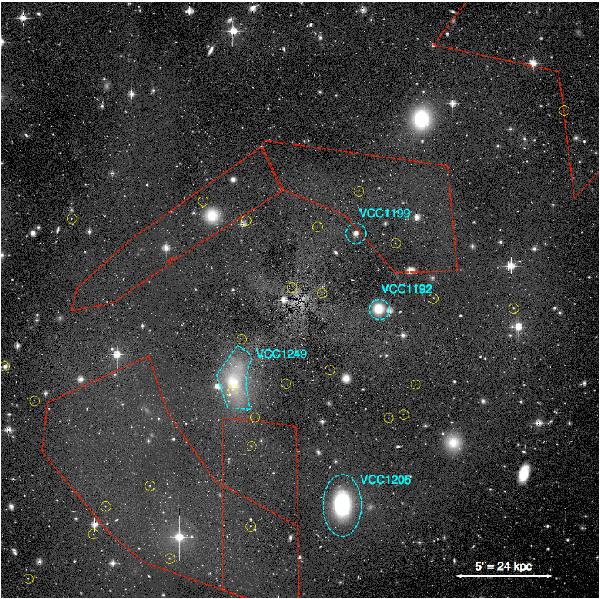Fig. 16

Grayscale image of M 49 showing residuals from the ELLIPSE model that best fits the azimuthally averaged isophotes in the NGVS g-band imaging (see Ferrarese et al. 2011). An extensive series of shells and filaments is apparent. A complex structural was also found by Janowiecki et al. (2010); the dashed red lines indicate the regions where these authors found shells and plumes in their residual image (here shown for comparison with those in Fig. 15). VCC 1249 is labeled in cyan, as are VCC 1199 and VCC 1192, two compact elliptical galaxies that have likely undergone tidal stripping (e.g., Cote et al. 2010). VCC 1205 shows evidence for star formation detached from the main body of the galaxy, in the direction of M 49. Yellow circles show the position of candidate UCDs (having g ≤ 21 and effective radii in the range 10 ≤ Re ≤ 100 pc) identified from the NGVS imaging. At least some of these objects may have formed through tidal “threshing” of nucleated dwarf galaxies (e.g., Bekki et al. 2001).
Current usage metrics show cumulative count of Article Views (full-text article views including HTML views, PDF and ePub downloads, according to the available data) and Abstracts Views on Vision4Press platform.
Data correspond to usage on the plateform after 2015. The current usage metrics is available 48-96 hours after online publication and is updated daily on week days.
Initial download of the metrics may take a while.


